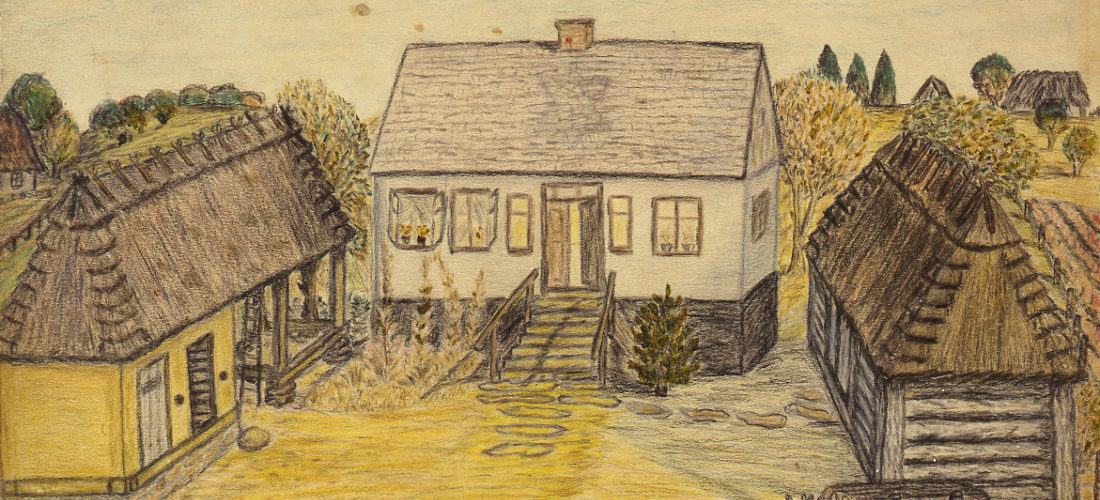Post-Holocaust Declarations Relating to Cultural & Educational Rights
In the post-Holocaust declarations of human rights, we found relatively little attention paid to the problems of teaching survivors, their descendants, and the world at large about the language, culture, and society that were destroyed.
1) Convention on the Prevention and Punishment of the Crime of Genocide, 1948
Raphael Lemkin was one of three Secretariat experts that helped to draft the 1948 UN Convention on the Prevention and Punishment of the Crime of Genocide. In 1933 Lemkin postulated that genocide can have a cultural orientation. The final drafters of the 1948 convention did not include ‘cultural genocide’ in the document. Lemkin, furthermore, rejected the initial convention because it gave scant attention to culturally oriented issues.
The 1948 UN Convention on the Prevention and Punishment of Genocide states that genocide is a crime that can be committed in times of war and peace. It defines genocide as an act committed with intent to destroy, in whole or in part, a national, ethnical, racial or religious group. In addition, the convention explains the UN protocol for addressing genocide claims and who can be punished for genocide.
2) Universal Declaration of Human Rights, 1948
Articles 26 and 27 of the 1948 UN Universal Declaration of Human Rights respectively address fundamental educational and cultural rights possessed by all humans. Article 26.2 states that ‘Education shall be directed to the full development of the human personality and to the strengthening of respect for human rights and fundamental freedoms. It shall promote understanding, tolerance and friendship among all nations, racial or religious groups, and shall further the activities of the United Nations for the maintenance of peace’. Article 27.1 states that ‘Everyone has the right freely to participate in the cultural life of the community, to enjoy the arts and to share in scientific advancement and its benefits’.
3) The International Covenant on Economic, Social, Cultural Rights, 1966
Articles 1, 13, and 15 are among the articles in the 1966 International Covenant on Economic, Social, and Cultural Rights that address educational and cultural rights. Article 1 states that all people have the right of self-determination and the right to pursue cultural development; Article 13 argues that education shall be directed to the full development of the human personality and the sense of its dignity, and shall strengthen the respect for human rights and fundamental freedoms. They further agree that education shall enable all persons to participate effectively in a free society, promote understanding, tolerance, and friendship among all nations and all racial, ethnic or religious groups, and further the activities of the United Nations for the maintenance of peace; Article 15 recognizes the right of everyone to take part in cultural life; The steps to be taken by the States Parties to the present Covenant to achieve the full realization of this right shall include those necessary for the conservation, the development, and the diffusion of science and culture
4) Declaration on the Rights of Persons Belonging to National, Economic, Linguistic Minorities, 1992
Articles 2.1, 4.2 and 4.4 are among articles in the 1992 UN Declaration on the Rights of Persons Belonging to National, Economic, Linguistic Minorities that address cultural and educational rights. Article 2.1 affirms the right of National, Economic, Linguistic minorities to practice their culture(s), language(s), and religion(s) freely in public and private spheres in the absence of discrimination. Article 4.2 describes that States should provide historical, language, and cultural education relating to the minorities living within their territories; and that persons belonging to minorities should have adequate opportunities to gain knowledge of the society as a whole.
5) UNESCO Universal Declaration on Cultural Diversity, 2001
Article 7 of the 2001 UNESCO Universal Declaration on Cultural Diversity states, “heritage in all its forms must be preserved, enhanced and handed on to future generations as a record of human experience and aspirations, so as to foster creativity in all its diversity and to inspire genuine dialogue among cultures.”
6) United Nations Declaration on the Rights of Indigenous People, 2007
Article 11 of the 2007 UN Declaration of the Rights of Indigenous People published in 2008 states, “Indigenous peoples have the right to practice and revitalize their cultural traditions and customs. This includes the right to maintain, protect and develop the past, present and future manifestations of their cultures, such as archaeological and historical sites, artifacts, designs, ceremonies, technologies and visual and performing arts and literature.”
Reparations After the Holocaust
In the case of the Holocaust, reparations have included monetary payments for confiscated property in Germany, payments to non-German Jewish survivors, and health treatments for survivors. German initiatives involving reparation to the Jewish people have also supported research efforts that focus on the Jewish survivors themselves, as well as Jewish studies research in general. However, up through today, only meager attempts have been made to provide survivors and their descendants with knowledge about the specific cultural milieu that existed before genocide.
To date after the multitude of genocides in the twentieth and twenty-first centuries, no other perpetrator group has provided reparation comparable to the German reparations to the Jews after the Holocaust.
Post-genocide reparations are meant to at least partially restore to victims what they lost during genocide. The post WWII era has seen the formation of organizations focused on providing reparations for Jews based on monetary reparations agreed upon by Germany. The Memorial Foundation and The Conference on Jewish Material Claims Against Germany, two Jewish organizations, are focused on returning, rebuilding, and sustaining Jewish culture. Since its inception in 1965, the Memorial Foundation has focused on identifying and providing scholarship opportunities to a new generation of scholars, intellectuals, academicians, writers, artists, rabbis, educators and other Jewish communal professionals to replace their earlier counterparts in Europe who were decimated by the Nazis in the Holocaust. Since 1987 the Memorial Foundation has awarded Nahum Goldmann Fellowships to talented young Jews interested in Jewish learning. Since its inception in 1951, The Conference on Jewish Material Claims Against Germany has sought to maintain Jewish culture through the returning of cultural property stolen by the Nazis to rightful Holocaust victims. The Claims Conference’s Looted Art Cultural Property Initiative benefits Holocaust survivors directly, as well as descendants and successive generations.


